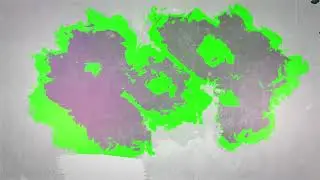Uncharted Making The Game A Reality
Get some cool drag & drop VFX here! ► https://www.famefocus.com/go/getvfx/ ◄
Don't forget to visit OUR SHOP here! ► https://fame-focus-vfx.creator-spring... ◄
Uncharted was inspired by the fourth game in the series with the same name, Uncharted: A Thief's End.
DNEG was the primary VFX vendor, completing 739 shots over 23 sequences. Other contributing VFX vendors included The Third Floor, RISE Visual Effects Studios, Soho VFX, and Savage Visual Effects.
Like the music in this video? I made it!
Support me by getting it on any of these sites :P
Get it on iTunes: ► https://apple.co/2ENGfu9 ◄
Listen on Spotify: ► https://spoti.fi/3boTfCl ◄
Buy it on Amazon: ► https://amzn.to/2QVJZfk ◄
DNEG was tasked with handling two of the biggest sequences, including a 90-second shot in which Nate and Chloe (along with cargo crates and a Mercedes Gullwing car) fall out of a C-17 cargo plane whilst flying over the South China Sea.
To begin creating the sequence DNeg received LiDAR scans and HDR photography of each individual cargo crate and all the other props like the Mercedes Gullwing, as well as a full scan of the C-17 interior.
A scale copy was built of the C-17 interior to be used as a physical set for principal photography as was the entire chain of crates that were either hung from cranes or mounted on robotic arms depending on the needs of the shot.
At the same time these were being built DNeg also worked on a fully digital version of the Gullwing and the C-17 exterior model with some modifications because the spec was to create a billionaire’s version of the well-known plane.
The part of the sequence where Nate and Chloe actually fall out of the C-17 was called ‘the oner’ because it was constructed to look like one continuous 90-second shot.
For the plate photography, they had several practical elements with the actors hanging on wires and interacting with props.
All the crates for the exterior were mounted on top of KUKA robot arms so that they could move around in a programmed sequence.
The crates were also made with extra padding and softer materials so that Tom and the stuntmen could jump on, in between, and from one to the other, and grasp hold of the crates netting without getting hurt.
These practical crates gave such a realistic-looking reaction for most of the sequence that DNeg could get away with only doing head replacements on the shots with Tom’s stuntman.
However, other shots did end up having to be full digi-double because they either wanted the performance to be more violent or the camera to be more dynamic than what was shot.
Throughout the entire sequence, they constantly switched between practical and digital, combining practical elements with long stretches of full CG moments.
Some sections required digi-doubles that could hold up to tight shots and even transition between plate and digi-double right close up with nowhere to hide.
The background environment was some multi-camera array footage that they shot at an altitude of around 7,500 feet stitched together and then augmented and islands were removed to make it look a bit more desolate.
All the clouds, wind FX and debris were CG.
The Lighting was a challenge because the plates were shot on a bluescreen soundstage with stationary lighting, but the characters are supposed to be falling through an environment with only one key light source, the sun.
In order to overcome this the team broke the sequence down into manageable sections which could then be assembled into one long shot in compositing at the end.
They kept track of changing light directions and found creative solutions to make it all work with the plates, seeing the sun rotating on high-action free-fall moments and then coming back to a more character-focused lighting when they were locked into practical photography.
The scenes with Magellan’s ships (the Trinidad and the Concepción) required extensive VFX, not just for the ships but also for the helicopters and the entire environment around them.
In the case of the Concepción, the set was split into four different stages, the stern, the main deck including the helm, the bow, and the crow’s nest complete with a partial mast.
LIDAR scans were taken of each set and then DNeg had to piece them together, lining them up with each other and combining them with the overall design of the ship.
The same process went into the Trinidad and any other set, like the helicopters.
#uncharted #tomholland #markwahlberg #adventures #moviescene #vfx #vfxbreakdown #makingof #behindthescenes #bts #unchartedbts #movie #film #filmmaking #filmmaker #cgi #trending #video #videooftheday #unchartedexplained #unchartedreview #unchartedgame
The above ActionVFX link contains a Special Fame Focus Discount. We also earn an affiliate percentage of each purchase.
Read more here: www.famefocus.com
Follow us on Twitter: / focusfame




![Albedo Story Quest: Act 5. Afterword (END) [Genshin Impact English | No Commentary Gameplay]](https://images.videosashka.com/watch/-yjFrZ7RTFU)


